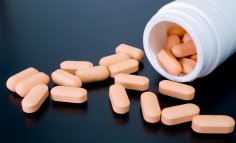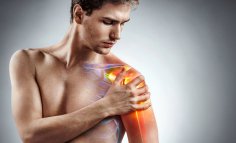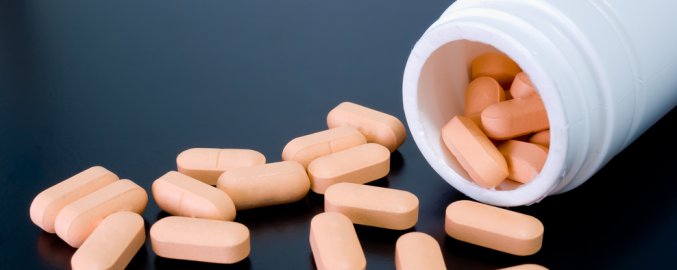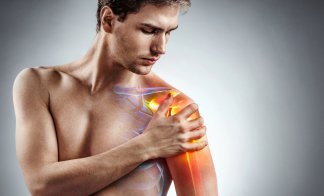Isidori studien i detaljer
Current Medical Research & Opinion
Vol. 7, No. 7, 1981
A. Isidori M.D. A. Lo Monaco, M.D.& M. Cappa, M.D.
Medical Clinic V. University of Rome, Rome, Italy. Received: 13th March 1981
Summary
A study was carried out in 15 male volunteers to evaluate qualitatively the secretion of growth factors following stimulation by oral amino acids. the results showed that oral administration of a combination of two amino acids (1200 mg l-lysine plus 1200 mg l-arginine pyroglutanate) provoked a release of pituitary somatotrophin & insulin. This phenomenon was reproducible & the growth hormone secreted in response to this stimulation had biological activity (as demonstrated by radiorecepter assay & somatomedin induction). The effect appeared to be specific to the combination of the two amino acids; neither of the amino acids demonstrated appreciable stimulating activity when administered alone, even at the same doses.
Introduction
It has been known for some time that intravenous administration of amino acids strongly stimulates secretion of growth hormone by the hypothesis. 1,4,13,15,16,18-20. This phenomenon has, in fact, been accepted & utilized as a test of pituitary function in growth disorders. 2,8,9,12,17. However, the physiological relevance of this release of human growth hormone (HGH) has not yet been fully established.
We have investigated, therefore, the following aspects of this phenomenon: (i) the exact biological nature of the HGH secreted in response to amino acid stimulation, (ii) a possible release of other growth factors in addition to HGH, (iv) whether specific amino acids (l-lysine 7 & l-arginine), either alone or in combination, produce varying HGH responses, (v) the time course of the HGH release, & (vi) whether oral administration of the amino acids is effective.
Subjects & methods
Fifteen healthy male volunteers, aged 15 to 20 years, free of all endocrine or metabolic abnormalities & who were not receiving any kind of medical treatment, were kept under observation for 2 days. After initial blood samples had been obtained, each subject received a single oral dose of 2400 mg amino acids (1200mg l-arginine-2-pyrrolidone-5-carboxylate plus 1200 mg l-lysine hydrochloride) on an empty stomach. Blood samples were again drawn at intervals of 30.60, 90 & 120 minutes after amino acid administration. The experiment was repeated after intervals of 10 & 20 days.
Blood samples were tested for growth hormone by: (a) a radioimmunoassay (RIA) method, & (b) a radioreceptor assay (RRA). This bioassay evaluates somatotrophin on a substrate of lymphocytes in monolayer culture (blastic lymphocytes IM9 infected with Epstein-Barr virus) after extraction & purification by gel-chromatography on a Sephadex column. The biological activity is evaluated in units & extrapolated to ng/ml.
Somatomedin activity (Somatotomedin A, Asm) was also addressed. To evaluate this HGH-dependant serum factor a biological method was used which determines the incorporation of 35SO4 (the sulphatating activity of the serum) & of 3H-thymidine on piglet rib cartilage. This method, which we modified, 11 is extremely precise (for levels below 0.3) & quite sensitive. Somatomedin activity is expressed in U/ml. One unit indicates the sulphatating activity of 1ml of pooled serum from at least 3 healthy subjects, as no international standard has yet been established for Asm. Normal values using this method are 1+- 0.2 U/ml, with confidence limits of 0.8 and 1.2.Insulin levels were determined by radioimmunoassay.
In a second experiment, 8 subjects randomly selected from the 15 included in the first experiment underwent growth hormone assays after administration of single doses of various amino acids: (i) 1200 mg l-arginine-2-pyrrolidone-5-carboxylate, (ii) 1200 mg l-lysine hydrochloride, (iii) 1200 mg of both (total 2400 mg), as in the first experiment, and (iv) 2400 l-arginine-2-pyrrolidone-5-carboxylate. Blood samples were drawn at the same times as in the first experiment and assayed only for growth hormone.
Results
The results are reported in Table I & figures 1, 2, & 3 & 4 for the experiment & in Table II & figure 5 for the second experiment.
Table I. Plasma levels of growth hormone (HGH), insulin & somatomedin (Asm) after oral administration of 1200 mg. l-arginine-2-pyrrolidone-5-carboxylate & 1200 mg l-lysine hydrochloride: mean (+- S.D.) values for 15 subjects
Measurement Growth hormone (ng/ml) RRA: RIA Insulin
(µU/ml) Asm
(U/ml)
RIA RRA
Baseline
30 mins
60 mins
90 mins
120 mins
8 hours 15.4 +- 5.0
86.2 +- 8.7
82.0 +- 14.8
108.0 +- 7.4
102.7 +- 10.0
48.0 +- 5.5 15.0 +- 3.0
60.26 +- 9.0
112.97 +- 6.2
0.73
1.04 7.3 +- 3.2
21.0 +- 1.5
11.7 +- 2.0
7.9 +- 3.1
9.85 +- 3.8 0.9 +- 0.2
0.9 +- 0.2
1.0 +- 0.1
1.0 +- 0.1
3.0 +- 0.1
10 days later
(90mins)*
20 days later 97.5 +- 5.6
95.0+-10.05
18.3+-2.5
17.7+-8.4
* The test was repeated after 10 and 20 days. The figures relate to the plasma samples taken at the time of maximal peak (90 mins) in the previous experiment.
Table II. Plasma levels (ng/ml) of growth hormone after single oral doses of l-arginine-2-pyrrolidone-5-carboxylate or l-lysine hydrochloride, alone or in combination: mean (+-S.D.) values for 8 subjects
Measurement Arginine
(1200 mg) Arginine
(2400 mg) Lysine
(1200 mg) Lysine(1200 mg)
Arginine(1200 mg)
Baseline
30 mins
60mins
90 mins
120 mins 7.3+-2.3
13.5+-7.5
10.0+-4.5
9.2+-4.7
9.4+-5.4 16.4+-4.1
3.4+-2.5
5.8+-4.0
5.9+-3.8
6.2+-4.1 4.8+-1.9
6.3+-3.8
7.8+-5.1
13.5+-5.2
15.8+-4.2 12.4+-2.5
29.0+-7.5
63.0+-7.8
98.5+-15.0
57.1+-10.0
From the results it would appear the the joint administration of the two amino acids (2400 mg total) brought about a marked biological response which was reproducible and did not reduce with time. As will be seen from I and 5, there was induction of a significant peak of immunoreactive HGH which reached a maximum at 90 minutes after administration and this was confirmed when the experiment was repeated.
Figure 1. percentage variations in plasma HGH (radioimmunoassay) with respect to baseline values after oral administration of 1200 mg l-arginine-2pyrrolidone-5-carboxylate plus 1200 mg l-lysine hydrochloride: mean (+-S.D.) values for 15 subjects.
The HGH released appeared to be biologically active both in vitro on RRA systems (Figure 2) and in the peripheral induction of mediators of somatomedin activity (Figure 3). The time lag between the HGH peak and the peak of somatomedin A corresponds to that previously reported.
Figure 2. Relationships between percentage variations from baseline values in plasma HGH, assessed by radioimmunoassay (RIA) and with a biological assay (RRA), after oral administration of the arginine plus lysine combination, as in figure 1.
Figure 3. Plasma levels of growth hormone (HGH) and somatomedin A (Asm) after oral administration of the arginine plus lysine combination, as in figure 1.: mean (+-S.D.) values for 15 subjects.
A significant secretion of insulin, another very important growth factor, was also induced (Figure 4).
Figure 4. Plasma levels (RIA) after oral administration of the arginine plus lysine combination, as in Figure 1.: mean (+-S.D.) values for 15 subjects.
The association of the two amino acids seemed to provoke a much greater HGH response than either of them demonstrated alone. Individually, their influence on HGH was practically non-existent (Figure 5), even when administered in doses equal to the total amino acid dosage of the combination.
Figure 5. Plasma levels of HGH (RIA) after oral administration of arginine and lysine alone in combination: mean (+-S.D.) values for 8 subjects.
Discussion
Our findings are clinically important in terms of the relevance of amino acids to growth disorders, particularly in relation to diagnostic test in growth disorders. The confirmation of biological activity of the HGH secreted in response to oral amino acid stimulation is very important. It is known that stimulation of the hypothesis by physiological processes 6,7,10 or pharmacological agents can result in the release of substances into the circulation, the majority of which possess immunoreactive properties enabling their identification by normal RIA systems, but the peripheral biological activity is often reduced or absent. 21 We have shown similar immuno-responses to the amino acid combination but, far more important, we could demonstrate that the association of the two amino acids does result in the release of biological-active hormone able to affect peripheral cellar receptors and thus growth in general.
Insulin is, of course, an equally important factor in cell growth. Even if there are some uncertainties regarding the bioactivity of the substance assayed, there is no doubt the the amino acids stimulated this as well as HGH: hence, both of the physiologically important growth factors are affected. It should also be noted that the hypoglycemia which follows the insulin peak is a further stimulus to HGH secretion.
Probably the most significant aspect of our findings is that these HGH responses have demonstrated following oral administration of the amino acid complex. Previously, the only amino acid to have been tested orally is trytophan, 3,5,14 so that demonstration of oral activity of this arginine/lysine combination is clearly of considerable importance in clinical and diagnostic practice, where if offers a more practical and physiological approach.
















